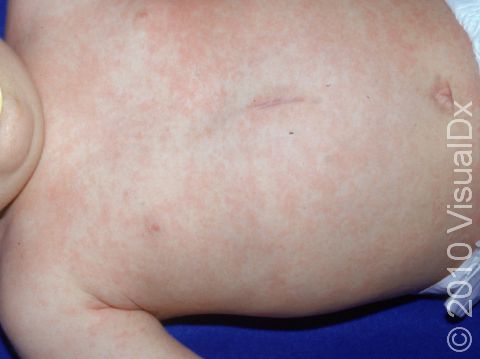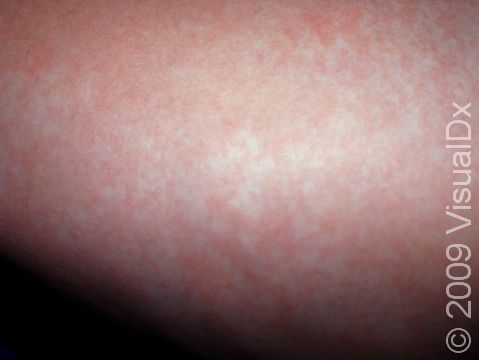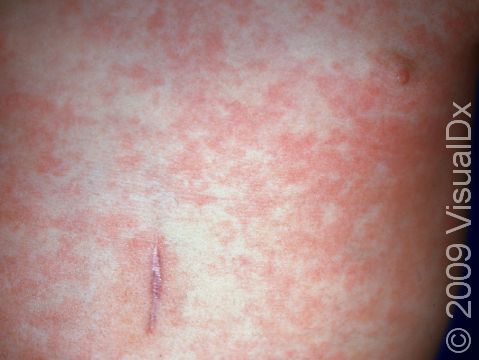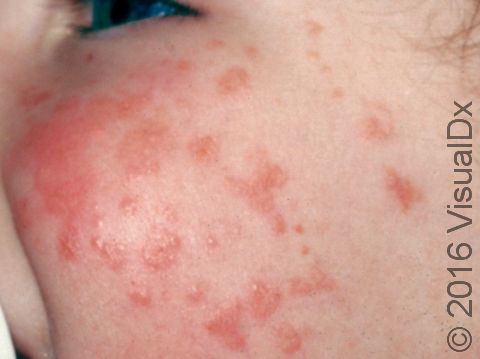Roseola (Sixth Disease)
Roseola, also known as sixth disease, exanthem subitum, and roseola infantum, is a mild illness that mainly affects children that will go away on its own. Roseola is caused by viruses of the herpes type. Infected children have a few days of high fever followed by a rash as the fever goes down. The rash usually lasts 1–2 days, or it may go away more quickly.
Who's At Risk?
Roseola commonly occurs in children under 3. Substances from the mother’s immune system (maternal antibodies) protect the child from getting roseola before the age of 6 months; however, it can occur in children between the ages of 3 months to 4 years.
Signs & Symptoms
If your child is otherwise well but has a high fever over 102 degrees Fahrenheit for 4 days, followed by a rash on the torso, he or she likely has roseola.
The fever that accompanies roseola is followed immediately by the appearance of rose-pink, flat or slightly raised bumps 2–3 mm in diameter that begin on the torso and may spread to the neck as well as the arms and legs (upper and lower extremities).
Self-Care Guidelines
Roseola goes away without any treatment. However, you might:
- Control the child’s fever with acetaminophen (Tylenol®) or ibuprofen and cool sponge baths. (Note: Do not use very cold water, ice, or alcohol rubs.)
- Encourage the child to drink fluids to avoid dehydration.
There is no way to prevent roseola from spreading because it is contagious before any symptoms appear.
Treatments
There is no specific treatment for roseola other than measures to control fever.
Visit Urgency
- Call the doctor if the fever does not go down with acetaminophen (Tylenol), if the child is difficult to wake up, or if the child is very irritable or appears very ill.
- If the child has convulsions or seizures due to fever, call the doctor or emergency room immediately.
References
Bolognia, Jean L., ed. Dermatology, pp.1261-1262. New York: Mosby, 2003.
Freedberg, Irwin M., ed. Fitzpatrick’s Dermatology in General Medicine. 6th ed. pp.2099. New York: McGraw-Hill, 2003.
Last modified on October 10th, 2022 at 8:02 pm

Not sure what to look for?
Try our new Rash and Skin Condition Finder



